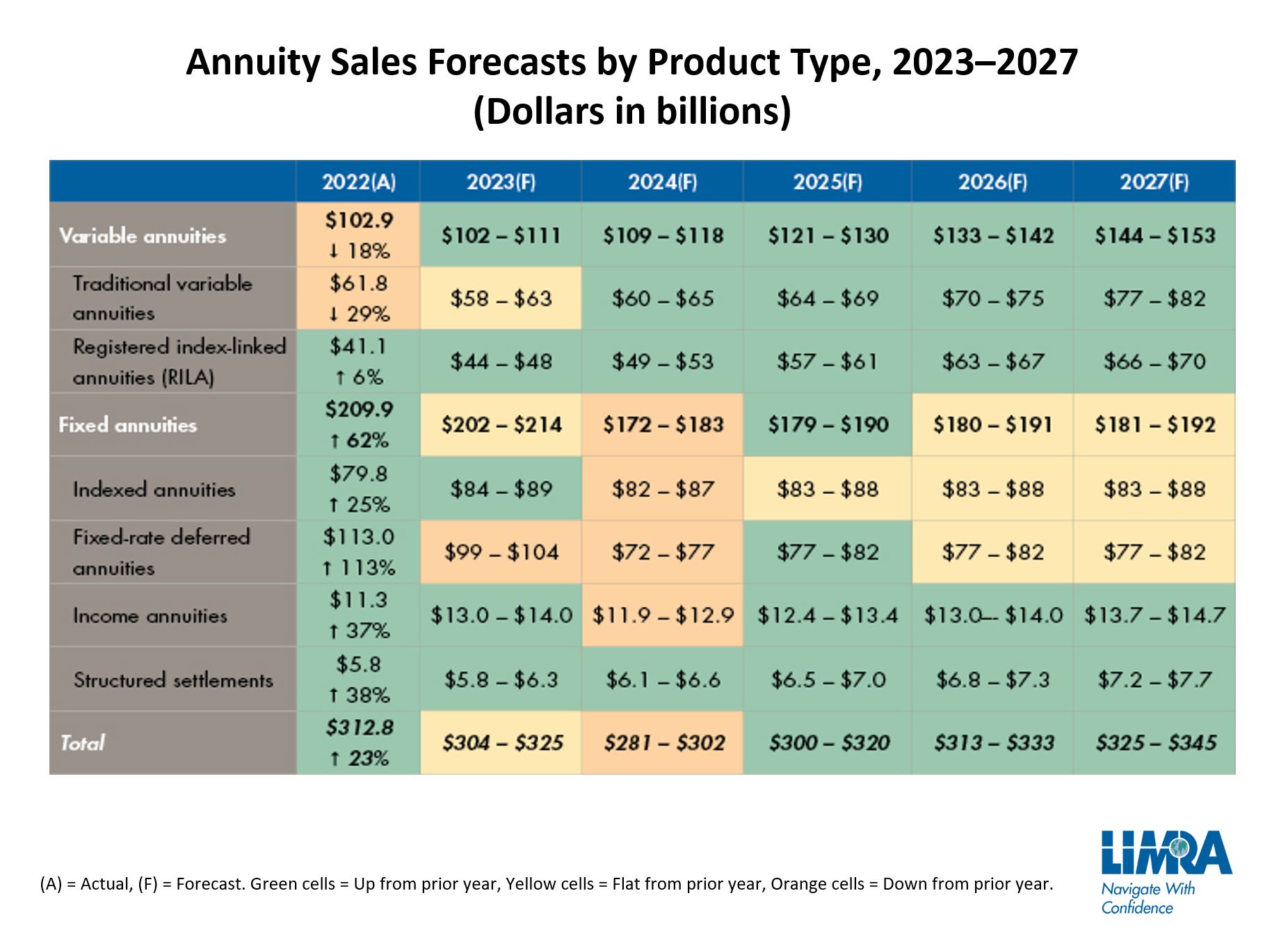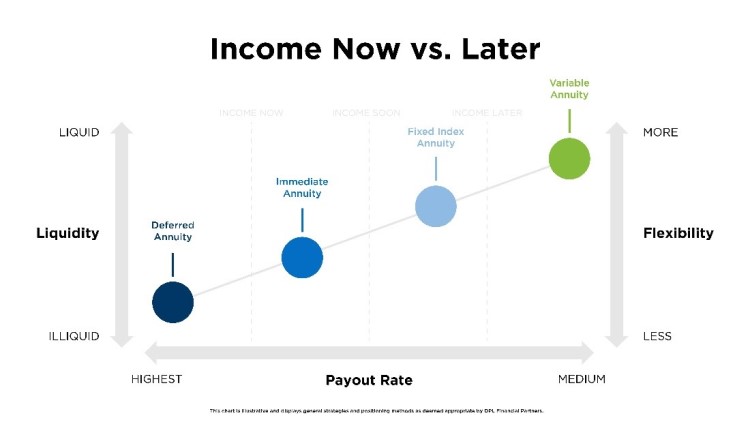Featured
Table of Contents
The settlement may be spent for growth for an extended period of timea solitary premium deferred annuityor invested for a brief time, after which payment beginsa single premium immediate annuity. Single premium annuities are usually moneyed by rollovers or from the sale of a valued asset. An adaptable premium annuity is an annuity that is intended to be funded by a collection of settlements.
Proprietors of repaired annuities recognize at the time of their acquisition what the worth of the future capital will certainly be that are generated by the annuity. Certainly, the number of capital can not be recognized beforehand (as this depends upon the contract owner's lifespan), but the ensured, fixed rate of interest price at the very least provides the owner some degree of certainty of future income from the annuity.
While this distinction appears straightforward and uncomplicated, it can substantially affect the value that an agreement owner ultimately originates from his or her annuity, and it develops substantial unpredictability for the agreement proprietor - Variable annuity features. It likewise normally has a product influence on the level of fees that an agreement proprietor pays to the issuing insurance policy firm
Fixed annuities are often used by older financiers who have actually restricted assets however that intend to offset the risk of outliving their properties. Set annuities can serve as an efficient device for this objective, though not without specific drawbacks. For example, in the situation of instant annuities, once an agreement has been bought, the contract owner relinquishes any type of and all control over the annuity assets.
Decoding How Investment Plans Work A Comprehensive Guide to Investment Choices Defining the Right Financial Strategy Pros and Cons of Various Financial Options Why Choosing the Right Financial Strategy Matters for Retirement Planning How to Compare Different Investment Plans: Explained in Detail Key Differences Between Different Financial Strategies Understanding the Risks of Fixed Indexed Annuity Vs Market-variable Annuity Who Should Consider Strategic Financial Planning? Tips for Choosing Fixed Vs Variable Annuities FAQs About Planning Your Financial Future Common Mistakes to Avoid When Planning Your Retirement Financial Planning Simplified: Understanding What Is Variable Annuity Vs Fixed Annuity A Beginner’s Guide to Fixed Index Annuity Vs Variable Annuities A Closer Look at Retirement Income Fixed Vs Variable Annuity
A contract with a regular 10-year surrender period would bill a 10% surrender cost if the agreement was surrendered in the first year, a 9% surrender fee in the 2nd year, and so on up until the surrender fee reaches 0% in the contract's 11th year. Some deferred annuity agreements consist of language that permits for tiny withdrawals to be made at various periods throughout the surrender duration without fine, though these allocations normally come at a cost in the form of lower surefire passion prices.
Just as with a repaired annuity, the proprietor of a variable annuity pays an insurance provider a round figure or series of payments in exchange for the guarantee of a series of future payments in return. As pointed out above, while a taken care of annuity expands at an assured, constant price, a variable annuity expands at a variable price that depends upon the performance of the underlying investments, called sub-accounts.
During the build-up stage, properties purchased variable annuity sub-accounts grow on a tax-deferred basis and are taxed just when the agreement proprietor takes out those incomes from the account. After the buildup stage comes the earnings phase. In time, variable annuity properties must in theory raise in value until the agreement owner determines she or he would love to start withdrawing cash from the account.
The most substantial concern that variable annuities typically existing is high cost. Variable annuities have a number of layers of charges and expenditures that can, in aggregate, develop a drag of approximately 3-4% of the agreement's value each year. Below are the most common costs connected with variable annuities. This cost compensates the insurer for the threat that it thinks under the regards to the agreement.
M&E expense costs are determined as a portion of the agreement value Annuity companies hand down recordkeeping and various other management prices to the contract owner. This can be in the type of a level annual charge or a percentage of the contract worth. Administrative fees might be included as part of the M&E threat charge or might be assessed independently.
These fees can vary from 0.1% for easy funds to 1.5% or more for proactively managed funds. Annuity agreements can be customized in a variety of methods to offer the details needs of the contract proprietor. Some common variable annuity cyclists include ensured minimum accumulation benefit (GMAB), assured minimum withdrawal benefit (GMWB), and assured minimal earnings benefit (GMIB).
Analyzing Fixed Annuity Vs Equity-linked Variable Annuity A Comprehensive Guide to Investment Choices What Is the Best Retirement Option? Features of Smart Investment Choices Why Variable Annuity Vs Fixed Indexed Annuity Can Impact Your Future Annuities Variable Vs Fixed: A Complete Overview Key Differences Between Different Financial Strategies Understanding the Key Features of Long-Term Investments Who Should Consider Fixed Index Annuity Vs Variable Annuities? Tips for Choosing Variable Vs Fixed Annuities FAQs About Deferred Annuity Vs Variable Annuity Common Mistakes to Avoid When Choosing a Financial Strategy Financial Planning Simplified: Understanding Your Options A Beginner’s Guide to Smart Investment Decisions A Closer Look at Variable Vs Fixed Annuity
Variable annuity payments offer no such tax obligation deduction. Variable annuities tend to be very inefficient lorries for passing wealth to the next generation due to the fact that they do not delight in a cost-basis modification when the original contract owner passes away. When the owner of a taxable investment account passes away, the price bases of the financial investments held in the account are gotten used to mirror the market rates of those financial investments at the time of the owner's death.
Such is not the situation with variable annuities. Investments held within a variable annuity do not obtain a cost-basis adjustment when the original owner of the annuity passes away.

One substantial concern associated with variable annuities is the capacity for problems of passion that might feed on the part of annuity salespeople. Unlike a monetary advisor, that has a fiduciary duty to make financial investment choices that profit the customer, an insurance broker has no such fiduciary commitment. Annuity sales are highly financially rewarding for the insurance specialists who market them as a result of high in advance sales compensations.
Many variable annuity contracts contain language which puts a cap on the percent of gain that can be experienced by specific sub-accounts. These caps prevent the annuity owner from completely joining a section of gains that might or else be appreciated in years in which markets create considerable returns. From an outsider's point of view, presumably that financiers are trading a cap on financial investment returns for the abovementioned ensured flooring on financial investment returns.
Analyzing Variable Vs Fixed Annuity A Closer Look at How Retirement Planning Works What Is What Is Variable Annuity Vs Fixed Annuity? Advantages and Disadvantages of Annuities Variable Vs Fixed Why Choosing the Right Financial Strategy Matters for Retirement Planning How to Compare Different Investment Plans: A Complete Overview Key Differences Between Different Financial Strategies Understanding the Risks of Long-Term Investments Who Should Consider Fixed Index Annuity Vs Variable Annuity? Tips for Choosing the Best Investment Strategy FAQs About Planning Your Financial Future Common Mistakes to Avoid When Planning Your Retirement Financial Planning Simplified: Understanding Your Options A Beginner’s Guide to Smart Investment Decisions A Closer Look at Fixed Income Annuity Vs Variable Growth Annuity
As noted over, give up charges can drastically restrict an annuity proprietor's capability to move assets out of an annuity in the very early years of the agreement. Further, while most variable annuities enable contract owners to take out a specified amount during the accumulation phase, withdrawals past this amount generally result in a company-imposed fee.
Withdrawals made from a set rate of interest financial investment choice can also experience a "market price adjustment" or MVA. An MVA adjusts the worth of the withdrawal to show any type of adjustments in interest prices from the moment that the money was spent in the fixed-rate choice to the moment that it was withdrawn.

Quite usually, also the salespeople that offer them do not totally recognize exactly how they function, and so salesmen occasionally exploit a customer's emotions to market variable annuities instead of the merits and suitability of the products themselves. Our company believe that financiers should totally comprehend what they own and how much they are paying to own it.
The very same can not be stated for variable annuity properties held in fixed-rate financial investments. These assets legitimately come from the insurance provider and would certainly for that reason be at danger if the firm were to fall short. Similarly, any type of warranties that the insurer has actually consented to offer, such as a guaranteed minimum revenue benefit, would remain in inquiry in the occasion of a business failing.
Decoding How Investment Plans Work Key Insights on Variable Vs Fixed Annuities What Is Fixed Annuity Vs Equity-linked Variable Annuity? Features of Smart Investment Choices Why Choosing the Right Financial Strategy Is a Smart Choice Indexed Annuity Vs Fixed Annuity: Explained in Detail Key Differences Between Different Financial Strategies Understanding the Rewards of Fixed Index Annuity Vs Variable Annuity Who Should Consider Fixed Annuity Vs Equity-linked Variable Annuity? Tips for Choosing the Best Investment Strategy FAQs About Variable Annuities Vs Fixed Annuities Common Mistakes to Avoid When Choosing Fixed Index Annuity Vs Variable Annuity Financial Planning Simplified: Understanding Deferred Annuity Vs Variable Annuity A Beginner’s Guide to Tax Benefits Of Fixed Vs Variable Annuities A Closer Look at What Is A Variable Annuity Vs A Fixed Annuity
Possible purchasers of variable annuities must recognize and take into consideration the financial problem of the issuing insurance coverage business before entering into an annuity contract. While the benefits and drawbacks of various types of annuities can be questioned, the actual issue surrounding annuities is that of viability.
Nevertheless, as the saying goes: "Buyer beware!" This short article is prepared by Pekin Hardy Strauss, Inc. ("Pekin Hardy," dba Pekin Hardy Strauss Wealth Administration) for educational objectives only and is not planned as an offer or solicitation for organization. The details and data in this article does not make up legal, tax, audit, investment, or various other specialist guidance.
Table of Contents
Latest Posts
Decoding How Investment Plans Work A Comprehensive Guide to Investment Choices Breaking Down the Basics of Fixed Indexed Annuity Vs Market-variable Annuity Features of Fixed Vs Variable Annuity Pros A
Highlighting Pros And Cons Of Fixed Annuity And Variable Annuity A Closer Look at Fixed Income Annuity Vs Variable Annuity What Is What Is A Variable Annuity Vs A Fixed Annuity? Benefits of Choosing t
Understanding Financial Strategies Key Insights on Variable Annuity Vs Fixed Annuity Defining the Right Financial Strategy Pros and Cons of Various Financial Options Why Choosing the Right Financial S
More
Latest Posts